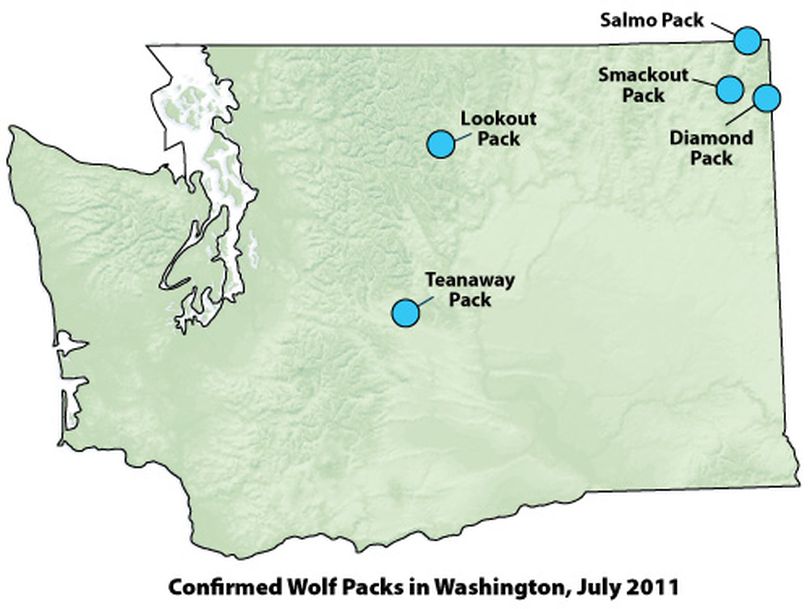Updated: More reaction to adoption of WA wolf plan

ENDANGERED SPECIES -- After four years of development, public review and controversy, the Washington Fish and Wildlife Commission Saturday unanimously adopted a plan that will guide state conservation and management of gray wolves in the state.
The citizen commission approved the Gray Wolf Conservation and Management Plan at a public meeting in Olympia, according to a media release from Fish and Wildlife Department officials.
Read two detailed accounts of the commission's discussion and vote.
Read reaction to the plan adoption from a wide range of groups.
The plan establishes recovery objectives for gray wolves in three regions in Washington, along with procedures for addressing predation on livestock and impacts on ungulates such as deer, elk and caribou.
Before the final vote, the commission approved several changes to the draft plan, including one that modified the distribution of breeding wolf pairs needed to remove wolves from the state’s endangered species list.
During the past four years, the plan developed by WDFW in conjunction with a 17-member citizen Wolf Working Group has been the focus of 23 public meetings, 65,000 written comments and a blind scientific peer review.
The working group split over the key element of how many breeding packs would be allowed before wolf numbers would be controlled. The dissenting group wanted the number set at eight breeding pairs. But the commission adopted the higher number recommended by a majority of the panel.
Key elements of the plan approved by the commission include:
- Recovery goals: The plan establishes a recovery objective of 15 breeding pairs of wolves that are present in the state for at least three years. Before gray wolves can be removed from the state’s endangered species list, at least four of those breeding pairs must be verified in Eastern Washington, four in the northern Cascades, four in the southern Cascades/Northwest coastal area and three others anywhere in the state. The commission also allows WDFW to initiate action to delist gray wolves if 18 breeding pairs are documented during a single year.
- Livestock protection: The plan provides a variety of management measures – from technical assistance for landowners to lethal removal – to control wolves that prey on livestock. The plan also establishes conditions for compensating ranchers who lose livestock to wolf predation.
- Wildlife protection:The plan allows WDFW to use lethal and non-lethal measures to manage wolf predation on at-risk deer, elk and caribou populations if wolf numbers reach or exceed the recovery objective within a region where predation occurs. The commission modified the definition of “at-risk” populations to give WDFW more flexibility in responding to the effect of wolf predation on those animals.
WDFW is not allowed to import wolves from other states or seek to increase the wolf population to historic levels under the parameters set for the new wolf management plan by an associated environmental impact statement.
Read on for more details.
Once abundant in the Pacific Northwest, gray wolves are currently classified by the state as endangered throughout Washington. They are also listed under federal law as endangered in the western two-thirds of the state.
WDFW began developing the wolf-management plan in 2007, anticipating that gray wolves would naturally migrate into the state from Idaho, Oregon, Montana, and British Columbia. Since then, five wolf packs have been documented in the state – three in northeastern Washington and two in the Cascade Mountains.
All aspects of the state’s newly adopted plan take effect immediately east of state highways 97, 17 and 395, where gray wolves were removed from federal protection last May. In the rest of the state, federal law will take precedence over the state plan until wolves are delisted under the federal Endangered Species Act in that area.
The draft Wolf Conservation and Management Plan is posted here on the WDFW website.
The final plan, incorporating amendments adopted by the commission , will be posted on the site by mid-January.
